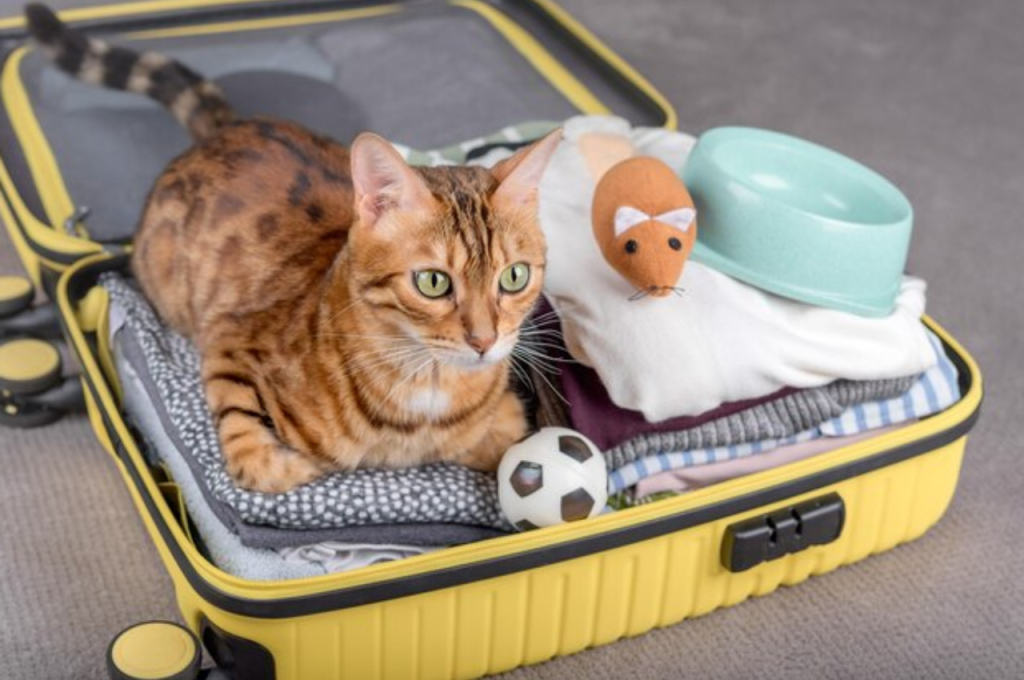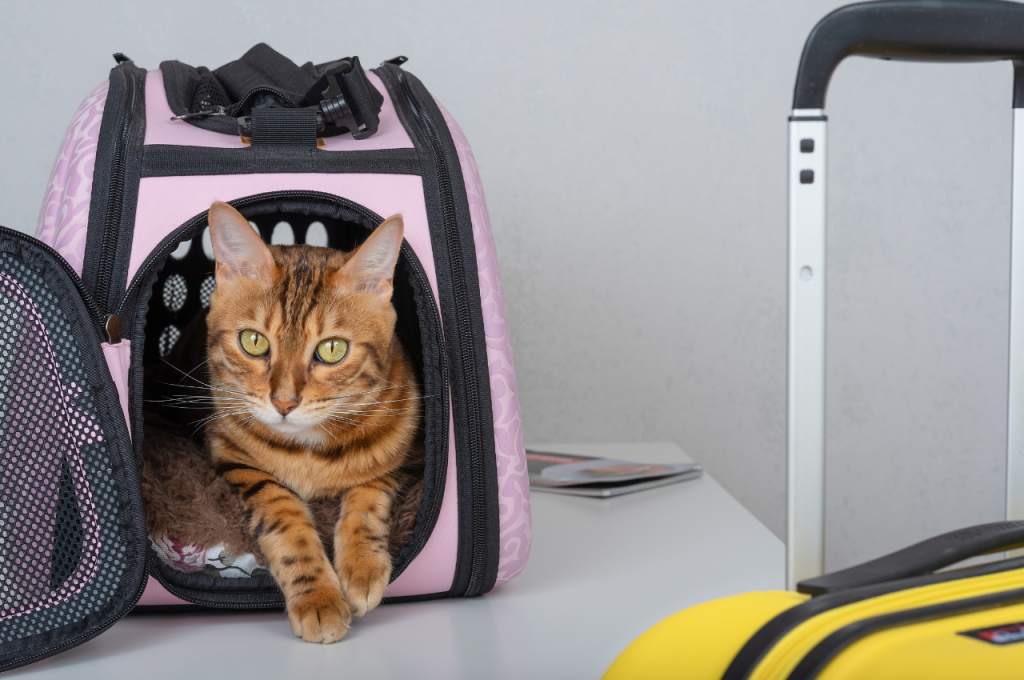Train your cat to travel with you by starting with short trips and gradually increasing the duration, providing a comfortable carrier, and using positive reinforcement techniques. Traveling with your cat can be a rewarding experience, but it requires patience and proper training.
Gradually expose your cat to the car by taking short trips around the block, offering treats and praise for calm behavior. Use a carrier that is spacious, secure, and comfortable for your cat, and introduce it gradually by placing treats and toys inside. Reward your cat with treats and praise whenever they enter the carrier willingly. With consistent training and positive reinforcement, your cat can become a travel companion in no time.
Introduction to Feline Travel
Feline travel involves preparing your cat for safe and comfortable journeys. Training your cat to travel with you requires gradual acclimation to the carrier, positive reinforcement, and short practice trips. Start by making the carrier a familiar and positive space with treats and toys. Gradually increase travel time and ensure your cat is comfortable with car rides. Consistency and patience are key to ensuring your cat adjusts well to traveling with you.

Why Travel with Your Cat
Traveling with your cat can strengthen your bond and provide enriching experiences for both you and your feline companion. It allows your cat to explore new environments and can help reduce their anxiety by keeping them close to you. Additionally, taking your cat along can save you from worrying about their well-being while you are away.
Challenges and Rewards
Bringing your cat on trips presents unique challenges, such as ensuring their comfort and safety during travel. However, the rewards of having your cat with you during adventures far outweigh these challenges. It allows for memorable shared experiences and strengthens the sense of companionship between you and your cat.
Getting Your Cat Comfortable with Their Carrier
To train your cat to travel with you, start by making the carrier a positive space. Place treats, toys, and bedding inside to create a cozy environment. Allow your cat to explore the carrier at their own pace, leaving the door open so they can enter and exit freely. Gradually get your cat accustomed to spending time inside the carrier by closing the door for short periods while offering treats and praise. Once your cat is comfortable being inside, practice short car trips with the carrier to help them get used to traveling. Consistency and positive reinforcement will help your cat associate the carrier with safe, enjoyable experiences.
Choosing The Right Carrier
When choosing a carrier for your cat, opt for one that is well-ventilated, secure, and spacious enough for your cat to stand, turn around, and lie down comfortably. Consider a carrier with a removable top for easy access and cleaning, and durable construction to ensure your cat’s safety.
Familiarization Techniques
Introduce the carrier to your cat gradually by placing it in a familiar and comfortable space within your home. Encourage your cat to explore the carrier by leaving treats or toys inside, and associate positive experiences with it. Use pheromone sprays or calming aids to help your cat feel at ease in the carrier.
Safety First: Preparing for The Journey
When traveling with your cat, safety should be your top priority. Proper preparation can make the journey less stressful for both you and your feline friend. Here are some essential steps to ensure a safe and comfortable travel experience for your cat.
Health Checks and Vaccinations
Before embarking on a trip with your cat, schedule a visit to the veterinarian for a thorough health check. Ensure that your cat is up to date on all vaccinations, including those required for travel. This will help prevent the spread of diseases and protect your cat from potential health risks during the journey.
Id Tags and Microchipping
It’s crucial to have proper identification for your cat in case they get lost during travel. Make sure your cat wears a collar with an ID tag that includes your contact information. Additionally, consider having your cat microchipped, as it provides a permanent form of identification that can be invaluable in reuniting you with your cat if they become lost..
Flying High: Navigating Air Travel
If you are planning to travel with your cat by air, you are not alone. Many pet owners choose to bring their furry friends along for the journey. However, flying with a cat can be a bit more challenging than traveling by car or train. There are several things you need to consider before you book your flight, and it’s essential to plan ahead to ensure a smooth trip for both you and your feline companion.

Booking Your Flight
When booking your flight, it’s important to research the airline’s pet policy. Not all airlines allow pets, and those that do may have different rules and restrictions. Some airlines only allow cats in the cabin, while others require pets to travel in the cargo hold. Additionally, some airlines have size and weight restrictions for pets, so be sure to check the guidelines before booking your ticket.
It’s also a good idea to book a direct flight whenever possible. This minimizes the stress on your cat and avoids the risk of lost or delayed luggage. If you must take a connecting flight, make sure you have enough time to retrieve your cat and get to your next flight without rushing.
Airport and in-flight Tips
Once you arrive at the airport, make sure your cat has access to water and a litter box before you board the plane. It’s also a good idea to pack some treats and toys to keep your cat entertained during the flight.
If your cat will be traveling in the cabin with you, make sure you have a soft-sided carrier that fits under the seat in front of you. Your cat should be able to stand up, turn around, and lie down comfortably inside the carrier. It’s also a good idea to put a familiar blanket or toy inside the carrier to help your cat feel more comfortable. If your cat will be traveling in the cargo hold, make sure the carrier is sturdy and secure. Label the carrier with your name, address, and phone number, as well as your cat’s name and a photo of your cat. It’s also a good idea to attach a note to the carrier with feeding and medication instructions.
During the flight, try to remain calm and reassuring for your cat. Speak to your cat in a soothing voice and offer treats or toys to keep your cat calm and distracted. If your cat becomes agitated or vocal, try not to react, as this may make the situation worse. Traveling with a cat can be a bit more challenging than traveling alone, but with some careful planning, it can be a rewarding experience for both you and your furry friend. By following these tips for air travel with your cat, you can ensure a safe and comfortable journey for everyone involved.
Dealing with Anxiety and Stress
Prepare your feline friend for travel by easing anxiety and stress with gradual training and positive reinforcement. Introduce your cat to carriers slowly, use familiar scents, and create a comfortable environment for a successful journey together.
Recognizing signs of stress It’s essential to recognize the signs of stress in your cat before starting any training. Some common signs include hiding, excessive grooming, loss of appetite, and aggression. If you notice any of these signs, it’s crucial to take a break from training and allow your cat to calm down. Soothing techniques The key to reducing anxiety and stress in your cat during travel is to make them feel comfortable and safe. One way to achieve this is to create a familiar environment for your cat by bringing their favorite toys, bed, and blankets.
Additionally, you can use calming pheromone sprays or diffusers to help your cat relax. Another technique is to introduce short car trips gradually. Begin by taking your cat on short trips around the block and gradually increase the duration and distance over time. This will help your cat get used to the feeling of being in a car and reduce their anxiety. Ensuring your cat is comfortable during travel is also essential. Ensure your cat has enough space to move around and stretch their legs. You can use a comfortable carrier with enough ventilation and natural light. Consider covering the carrier with a blanket to provide a sense of security and privacy.
In conclusion, traveling with a cat can be stressful for both the cat and owner. However, by recognizing the signs of stress, using soothing techniques, and ensuring your cat is comfortable during travel, you can make the journey less stressful for your feline friend.
Advanced Training Techniques
Traveling with your cat can be a rewarding experience, but it requires advanced training techniques to ensure your cat’s safety and comfort. In this post, we’ll cover two of the most important techniques: leash training and recall training.

Leash Training
Leash training is an essential skill for cats who travel. It keeps them safe and under control in unfamiliar environments. Here’s how to get started:
- Choose a lightweight and comfortable harness that fits your cat properly.
- Introduce your cat to the harness by letting them sniff and explore it.
- Put the harness on your cat and let them wear it around the house for short periods.
- Attach a leash to the harness and let your cat drag it around the house.
- Start walking your cat on the leash indoors, gradually increasing the distance and duration of the walks.
Remember to reward your cat with treats and praise for good behavior. Always supervise your cat when they’re on a leash and never leave them unattended.
Recall Training
Recall training is another important skill for traveling cats. It teaches them to come back to you when called, even in distracting or scary situations. Here’s how to do it:
- Choose a cue word or sound that you’ll use to call your cat, such as their name or a whistle.
- Start training in a quiet, distraction-free environment.
- Call your cat’s name or use the cue word and reward them with a treat or praise when they come to you.
- Gradually increase the distance and distractions as your cat gets better at recalling.
- Practice recall training regularly to reinforce the behavior.
Remember to be patient and consistent with your training. Keep training sessions short and positive, and always end on a high note. With these advanced training techniques, your cat will be a confident and happy traveler in no time!
Conclusion
Training your cat to travel with you can be a rewarding and enjoyable experience. By following the steps outlined in this blog post, you can ensure a smooth and stress-free journey for both you and your feline friend. Remember to start with small trips, provide comfort and security, and use positive reinforcement to reinforce good behavior. With patience and consistency, you’ll soon have a travel-savvy cat ready to explore the world with you.
